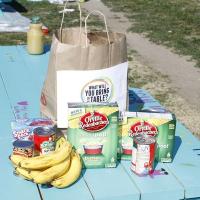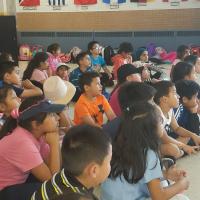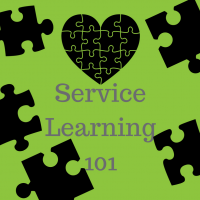We often hear about the importance of eating three healthy meals a day, however, some of us do not have the resources to even eat one. The problem with hunger and malnutrition is more complex than access to healthy food. It is complicated by multiple societal issues that we can address. Youth are equipped with a voice, heart, and hands to take big and small actions for a meaningful purpose to help raise awareness of and fight the issues of hunger and malnutrition.
In spite of the diverse roots that make up our country, some immigrants who come for opportunity and refugees who are forced to leave their homes are treated with disrespect or even cruelty. Young people have the opportunity to speak up and raise awareness of the beauty of diversity and value of embracing people of all backgrounds and situations. This toolkit guides youth, educators, group leaders, families, and community groups as they investigate the issue of immigration and refugees and prepare to take action.
Young people investigate the problems caused by plastic shopping bags, then propose solutions to address the problems. This lesson prompts teams to design a reusable shopping tote out of an old T-shirt using engineering, problem-solving, creativity, and communication. They take action for the common good by using and sharing their project and by educating the community about problems and solutions to the plastic bag crisis.
- Read more about Tote Challenge
- Log in or register to post comments
In civil society, different people come together to form community. While differences may cause conflict, for the sake of the common good, we practice empathy and respect for others. We use literature to talk about how people from different perspectives see the same thing. We discuss how to communicate respectfully with someone of a different opinion and to seek common ground or compromise. The service project is to create posters that bring people together.
- Read more about Resolving Conflict with Respect - Elem
- Log in or register to post comments
We are made by history. In this activity, youth read the stories of philanthropic African Americans and influential related events that made America what it is today. Then they create a virtual Pop-Up Museum as an advocacy service project in which they tell stories of Black history and philanthropy.
- Read more about Black History IS American History
- Log in or register to post comments
Young people learn about people and children who are homeless and make bedtime bags for children in shelters as their service project.
"I always wondered why somebody doesn't do something about that. Then I realized I was somebody." - Lily Tomlin
- Read more about Bedtime Bags (K-12)
- Log in or register to post comments
Learners use words to communicate positively and build community. A service project involves writing positive messages on stones and placing them strategically to uplift and beautify.
- Read more about Doodle Stones
- Log in or register to post comments
Students learn about the goals of Earth Day and identify areas in town that need clean-up or planting. They plan a day of service.
Teach this one-period lesson plan and follow it with a simple and powerful service project before or on Earth Day. The reflection brings learning and service impact together.
- Read more about Community Clean-Up
- Log in or register to post comments
Students learn about the role of bees as pollinators and learn about reasons their population numbers have been declining in recent years. They write a letter or create a handout to teach others how to help bees through planting native species.
- Read more about Beneficial Bees - Elementary
- Log in or register to post comments
Learning and action through service-learning give youth purpose to "do well and do good" because they see what they do matters and creates real solutions. This teaching and learning tool cultivates a caring community and prepares young people for responsible civic engagement, as well as college...


